Despite the certain slowdown in various industries, the fintech sector thrives, witnessing massive investments and widespread adoption of its services. This growth extended to the cryptocurrency industry, which saw remarkable development and an increasing number of cryptocurrency holders. As a result, more businesses are enticed to invest in this promising realm.
With the surge in digital transactions, crypto holders and traders demand a secure, user-friendly, and convenient platform to manage their funds. The desire to buy cryptocurrencies, wait for favorable exchange rates, and trade them seamlessly on exchange websites has created a necessity for cryptocurrency exchanges in the industry.
These exchanges enable enthusiasts to instantly buy, sell, and trade their digital assets, fostering a vibrant market. The opportune moment has arrived to venture into building your own exchange platform.
In our comprehensive article, you’ll explore various crypto exchange platform types, discover essential features, delve into crypto exchange development frameworks, and learn design best practices and architecture specifics. So, let’s start!
Crypto market: future and statistics for today
The market’s meteoric rise is projected to reach $4.94 billion by 2030, establishing it as one of the fastest-growing industries globally. Notably, research by Grand View Research highlights the significant expansion expected in cryptocurrency exchange platforms between 2020 and 2030.

Presently, there are over 500 crypto exchanges worldwide, collectively boasting a staggering daily trading volume exceeding $100 billion. This thriving and ever-expanding landscape presents a promising opportunity for entrepreneurs contemplating the establishment of their own cryptocurrency exchange.
10 main steps to develop a cryptocurrency exchange
Our guide on how to start a crypto exchange business consists of the following steps:
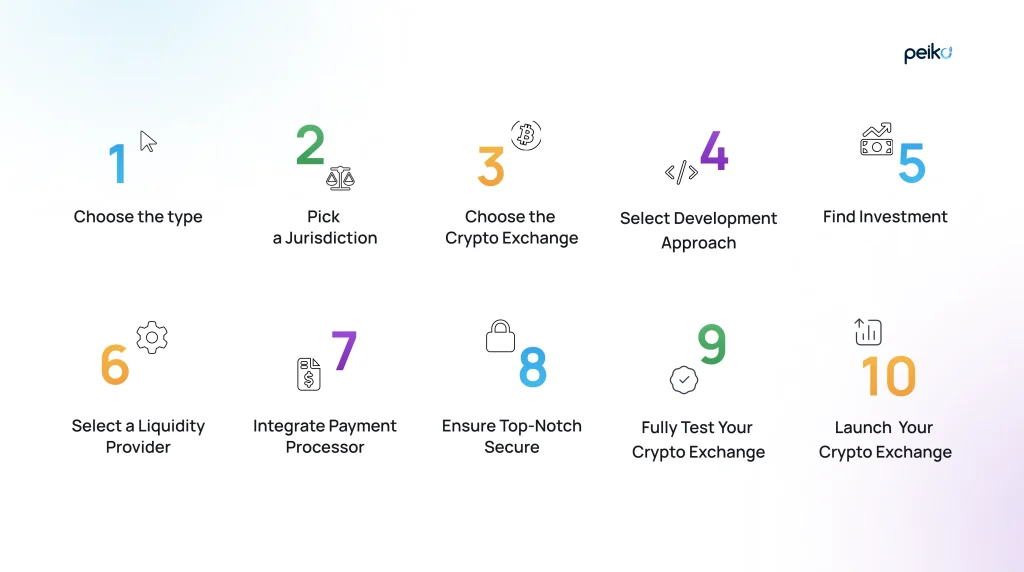
Step 1: Select the cryptocurrency exchange type
Embarking on the journey of developing your cryptocurrency exchange platform requires a crucial initial step – choosing the most suitable type of exchange. This decision will have a profound impact on various aspects, such as the crypto-exchange software, cryptocurrency storage methods, licensing considerations, liquidity management, and the ability to facilitate fiat currency trading.
In the vast landscape of cryptocurrency exchanges, the following main types stand out:
- Centralized cryptocurrency exchanges (CEX),
- Decentralized cryptocurrency exchanges (DEX),
- Peer-to-peer exchanges (P2P),
- Instant exchangers,
- Other types.
Let’s delve deeper into each of these options to gain a comprehensive understanding.
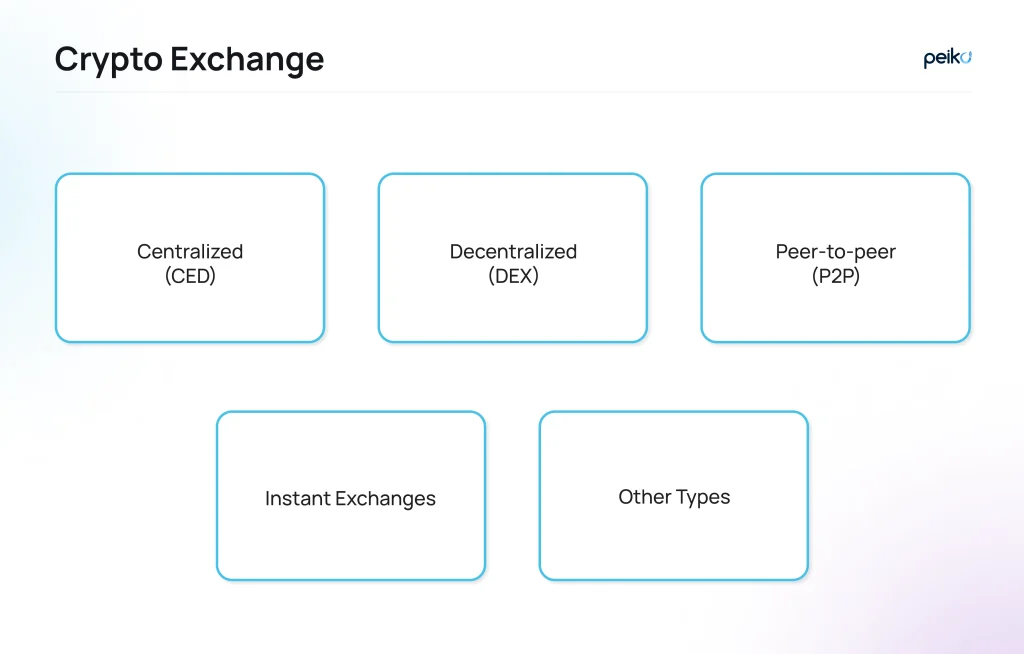
Centralized cryptocurrency exchange
CEXs are widely used platforms for trading digital currencies, offering convenience in buying, selling, and exchanging both cryptocurrencies and fiat currencies. Users trust the exchange as an intermediary for financial transactions, but security measures must be taken to protect assets.
These exchanges boast high speed, liquidity, favorable rates, user-friendly interfaces, extensive trading options, and a wide range of trading pairs.
Prominent CEX examples include Binance, Kraken, Gemini, and Coinbase, which are known for their seamless crypto trading.
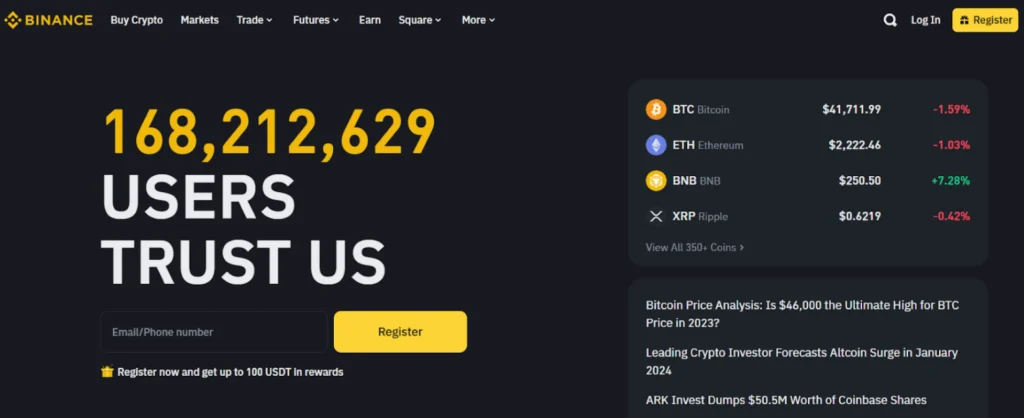
Decentralized cryptocurrency exchange
If you are searching for how to create a decentralized cryptocurrency exchange, you should consider its peculiarities. A DEX operates on blockchain technology and smart contracts, avoiding the storage of user assets and personal information. By eliminating intermediaries, traders can conduct direct transactions, ensuring the highest level of anonymity. Users maintain control over their funds through personal wallets and private keys.
Despite the advantages of anonymity and control, DEXs have limitations such as reduced functionality, lack of fiat currency support, slower transaction speed due to the blockchain, and no access to margin trading. Additionally, DEXs may not comply with legal requirements and lack customer support, making them less appealing to beginners.
Prominent DEX examples include PancakeSwap, Uniswap, Sushiswap, MDEX, and others.
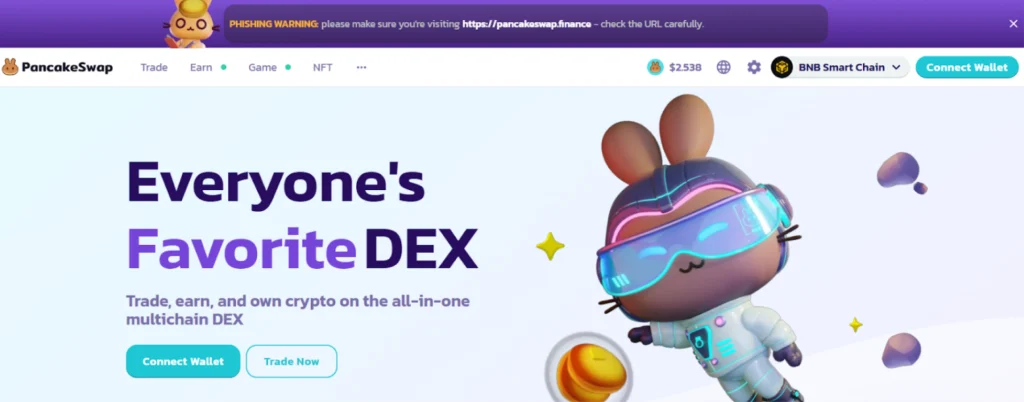
Peer-to-peer exchanges
P2P exchanges offer direct cryptocurrency trading between users on message boards. Users search for counterparties with specific terms and connect to finalize the exchange.
They provide flexibility in payment methods, allowing trades with fiat, gold, or other goods as agreed upon. Considering the growing demand for decentralized and personalized trading experiences, the P2P crypto exchange development occurs as an appealing option.
By providing a platform that prioritizes user autonomy and flexibility, it caters to those looking for alternative and innovative approaches to cryptocurrency trading. As the crypto market continues to evolve, P2P exchanges are positioning themselves as a promising and dynamic solution for modern traders.
Examples include Binance P2P, Bybit P2P, OKX P2P, and more.
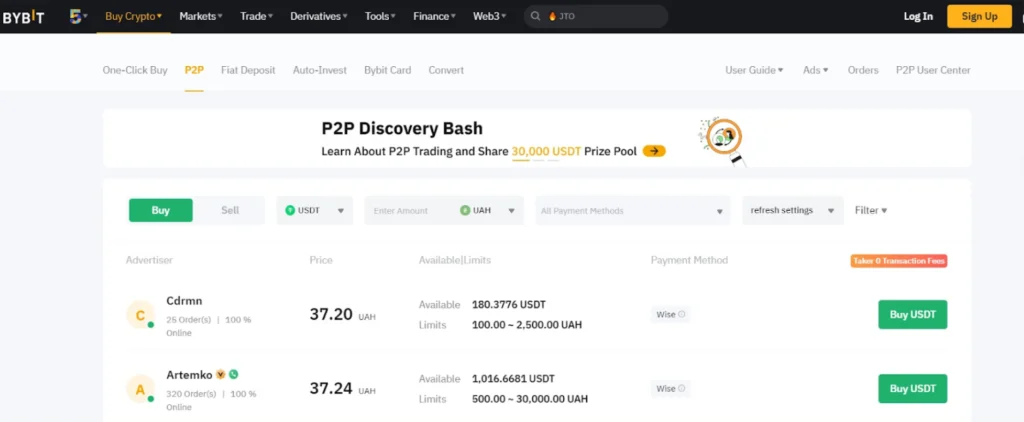
Instant exchangers
These exchangers are incredibly user-friendly platforms that function as straightforward exchange points. Users can simply open a trade order, and the execution happens instantly. These sites act as brokers, granting access to the liquidity of various exchanges.
However, this speed comes with a tradeoff – the involvement of multiple intermediaries leads to higher commissions and a potential decrease in security levels. While they offer quick transactions, users should carefully consider the trade-offs before opting for instant exchangers.
Examples of such a type of crypto exchange comprise SimpleSwap, Godex.io, and many others.
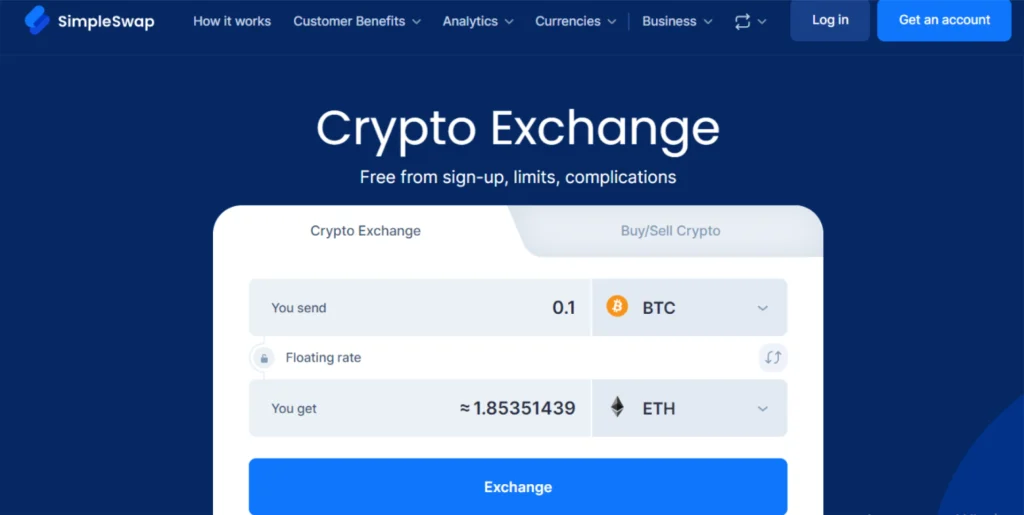
Other types of cryptocurrency exchanges
In addition, hybrid platforms can be found on the market that present a fascinating blend of features from both centralized and decentralized exchanges, offering unique advantages to traders. In these platforms, third-party operators may run the service, but users gain more control over their funds.
Transactions and orders are encrypted, timestamped, and stored on the blockchain, ensuring transparency and security. Interestingly, order approval is conducted outside the blockchain, utilizing third-party nodes.
This hybrid approach opens up new possibilities for traders, striking a balance between centralized convenience and decentralized data integrity.
Prominent examples include Nash, Unisawp (V3), and others.
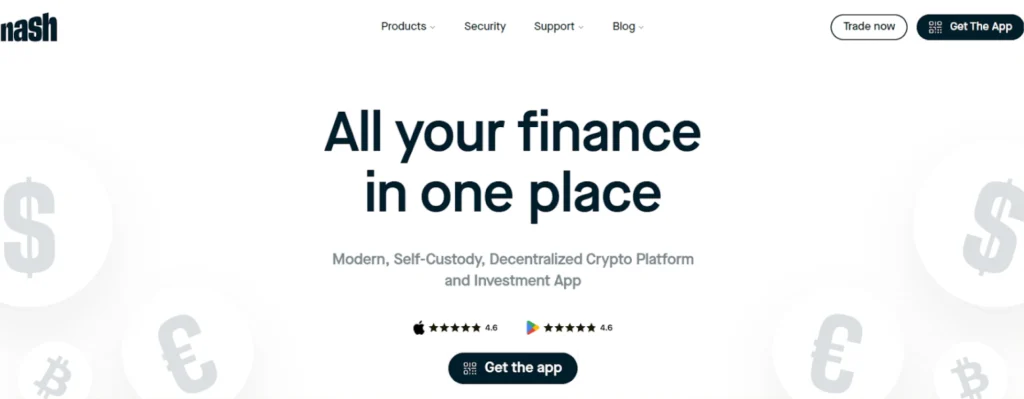
If you’re considering how to make a cryptocurrency exchange website, it’s essential to determine the type of platform you would like to develop and evaluate its income potential. Among the various options, crypto derivatives exchange development stands out as a particularly lucrative avenue that can generate significant returns.
By focusing on this type of platform, you open the door to maximizing your earnings and tapping into the vast potential of the crypto market. Conducting thorough research and understanding the dynamics of derivatives trading will be key to building a successful and profitable exchange that meets the changing needs of traders in the crypto space.
Step 2: Pick а jurisdiction
Choosing the right jurisdiction is a crucial step when setting up a regulated crypto exchange. It entails absolutely examining the legal aspects related to obtaining the necessary licenses for your exchange operations and collaborations with payment systems and banks.
While cryptocurrencies are gaining popularity globally, it’s essential to be cautious of countries that have strict prohibitions on crypto transactions. Thus, you will avoid such regions and focus on jurisdictions that are more crypto-friendly.
When making your decision, take into account several key factors:
- The government’s stance on cryptocurrencies.
- The level of infrastructure development supporting crypto activities.
- Specifics of the corporate legislation and regulations governing the crypto sector.
- The overall openness of the market to cryptocurrency-related businesses.
- The country’s political and economic stability can impact the long-term prospects of your exchange.
- Costs of services and the minimum required authorized capital for licensing.
- The ease and timeline for cryptocurrency business registration in the chosen jurisdiction.
By carefully considering these factors, you can make an informed choice that aligns with your exchange’s goals and ensures regulatory compliance in a favorable environment.
Step 3: Choose the crypto exchange architecture
During this crucial phase in our tutorial on how to make a cryptocurrency exchange, it becomes imperative to outline its architecture. This step ensures a cohesive and well-organized understanding of how all elements will function within your platform and how they will interact harmoniously. The architecture of your cryptocurrency exchange will be tailored to its specific type, functionalities, and scalability requirements.
Typically, the following components are taken into consideration when developing the crypto exchange architecture:
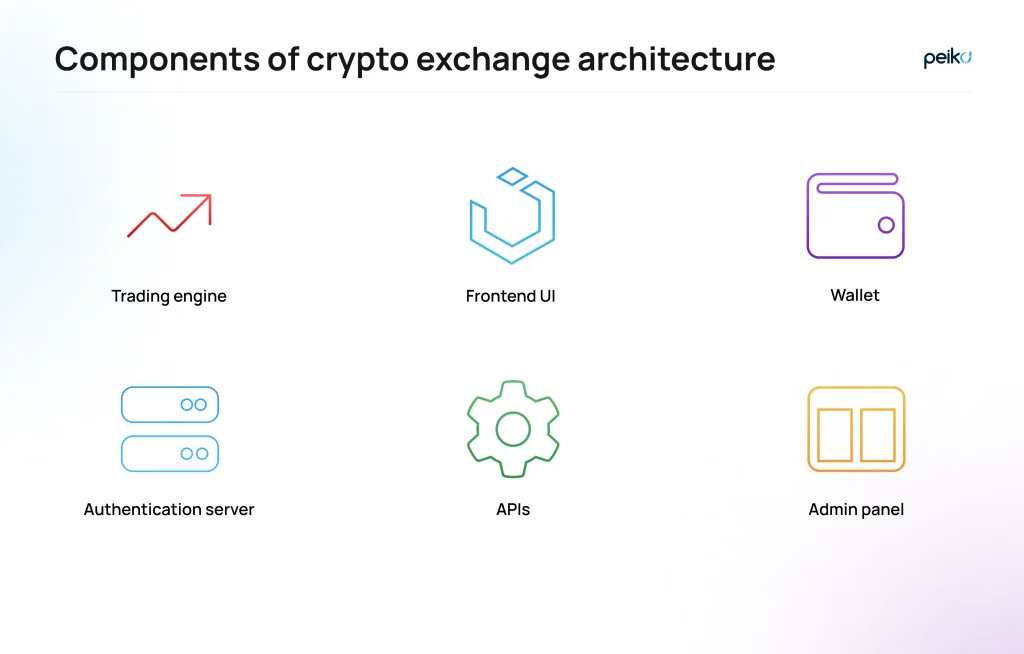
Trading engine
The trading engine stands as a pivotal element within every cryptocurrency exchange. Its significance lies in its role of efficiently handling various operations, such as matching buyers and sellers, order management, price calculations, and promptly delivering results to clients through API (application programming interface) calls. This essential component ensures the seamless execution of trades, contributing to the overall success of the exchange platform.
Frontend UI
The front-end component of the trading engine serves as the gateway for traders, offering them a user-friendly interface to interact with the exchange. A well-designed UI (user interface) is crucial, ensuring ease of use, enhanced security, and swift responsiveness to accommodate the substantial volumes of trades without compromising performance. It is vital to strike a balance between user experience (UX) and technical efficiency to create a satisfactory trading experience for all users.
Wallet
In this crucial aspect, the platform ensures that users’ funds are safeguarded with utmost security, leaving no room for hackers or malicious actors to compromise their hard-earned money. By applying robust security measures and advanced encryption protocols, the exchange takes proactive measures to prevent unauthorized access and protect users’ assets from potential threats.
Authentication server
These servers play a critical role in the web application’s security by verifying user credentials and granting access to authorized users. When users attempt to log into their exchange accounts, the authentication server performs checks to ensure the validity of their email address and password. Only after successful verification are users granted access to their accounts, ensuring a secure and protected trading experience.
APIs
Application programming interfaces serve as important communication channels between various systems, facilitating seamless interactions. One primary use of APIs is to interact with external systems like wallets. Additionally, APIs play a key role in integrating with third-party services such as KYC (Know Your Customer) providers, enabling thorough identity verification processes for enhanced security and compliance. Moreover, they can be utilized to access real-time news feeds or integrate with social networks.
Admin panel
It is a powerful tool for effective exchange management. The admin panel offers real-time insights into traffic, trading volume, transactions, and commission income. You can easily track traders, wallets, and transactions, ensuring a secure trading environment. It also allows essential actions like user verification, content management, and account control. The admin panel’s flexibility lets you adjust commissions to optimize revenue.
Step 4: Decide on a development approach
There are two approaches: a crypto exchange from scratch or white-label crypto exchange software development. We’ll outline the pros and cons of each, helping you make the right choice.
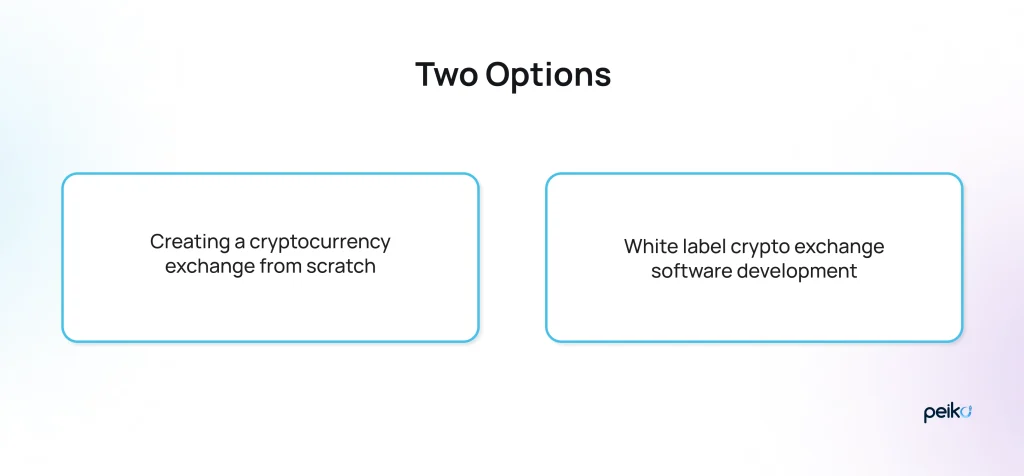
Option 1: Creating your crypto exchange platform from scratch
Opting for this way requires thorough preparation and a highly skilled team. It’s essential to be aware that the crypto currency exchange development process can span over a year and demands significant investments.
Additionally, the project must undergo rigorous safety and regulatory audits. If you lack experience in this domain, hiring professionals is advisable to ensure a compliant and secure solution that meets all requirements.
Option 2: White-label crypto exchange software development
Such a type of development is a preferred choice for startups, offering quick and efficient market entry. It provides ready-made products with essential features, allowing for easy customization. With white-label crypto exchange software development, startups can swiftly launch a fully functional platform.
This turnkey solution is adaptable to specific business needs, including extra features and branding. The pre-developed and tested nature of crypto exchange white-label software development makes it suitable for all crypto businesses, saving valuable time and resources. By choosing this option, startups can focus on core strategies and swiftly enter the competitive crypto market.
Step 5: Think about securing financial backing
Embarking on the journey of developing your own cryptocurrency exchange entails finding adequate investments to assemble a skilled and diverse team. This team may include developers, testers, marketers, lawyers, content creators, and other specialists essential to the project’s success. So, how much does it cost to start a crypto exchange?
Depending on the scale and complexity of your trading platform, the required crypto exchange development cost can vary. Precisely calculate your financial resources for the creation and ongoing maintenance of the crypto exchange well in advance to ensure a smooth and successful venture.
Indeed, an experienced blockchain development partner will answer your question, “How much does it cost to start a crypto exchange?” in your case.
Step 6: Select a reliable liquidity provider
The key to the success and competitive edge of your cryptocurrency exchange lies in securing optimal liquidity. Your priority is to find a dependable liquidity provider with an extensive network of connections in the cryptocurrency market. To achieve this, carefully consider the following crucial factors:
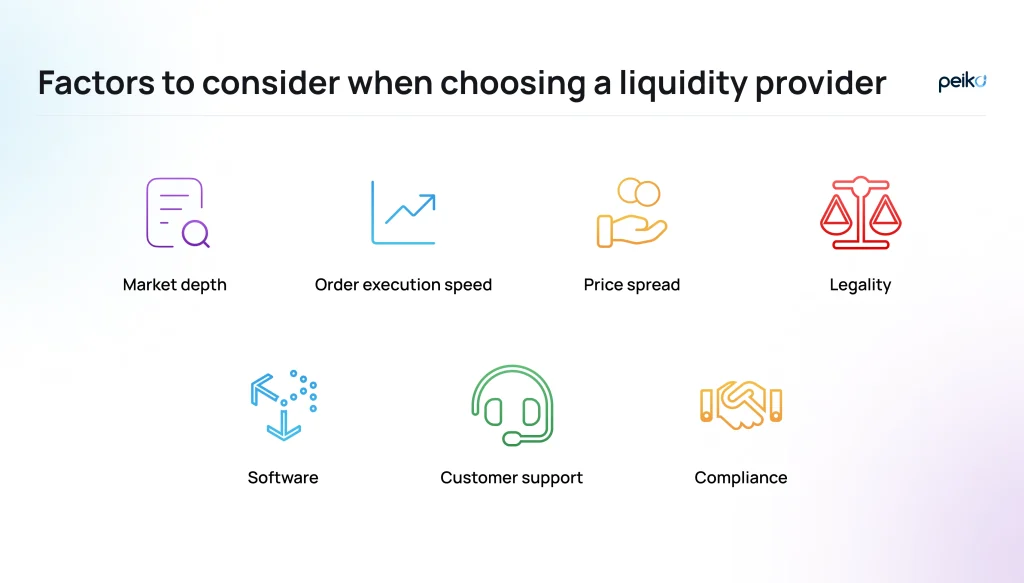
Market depth: Evaluate the depth of the market offered by the liquidity provider to ensure sufficient trading opportunities for your users.
Order execution speed: Swift order execution is essential for maintaining seamless trading experiences and user satisfaction.
Price spread: Analyze the price spreads provided by the liquidity provider to ensure competitive rates and attractive offers for traders.
Legality: Verify the legality of the liquidity provider’s operations and ensure they adhere to relevant regulatory requirements.
Software: Assess the quality and efficiency of the liquidity provider’s software to guarantee smooth integration with your exchange platform.
Customer support: Reliable customer support from the liquidity provider is essential for resolving issues promptly and ensuring smooth operations.
Compliance: Ensure that the liquidity provider complies with anti-money laundering and other crucial regulations to maintain a trustworthy and compliant environment for your users.
Step 7: Integrate a reliable payment processor
The next step in our guide on how to create a cryptocurrency exchange website is integrating a payment processor. Ensuring seamless deposits, withdrawals, and transactions for your users is vital, and a robust payment processor can make this possible. When selecting the right provider, conduct thorough research to assess its offerings, including performance, transaction speed, security features, availability, and the variety of supported cryptocurrencies.
Take note of the number of companies already using the payment system to gauge its popularity and reliability. Additionally, delve into market prices, terms and conditions, user feedback, and other critical factors to make an informed and confident decision. By integrating a trustworthy payment processor, you can enhance the user experience and build trust in your cryptocurrency exchange platform.
Step 8: Ensure top-notch security
As the cryptocurrency market thrives and expands, it attracts new participants while also catching the attention of fraudsters seeking to exploit vulnerabilities in cryptocurrency wallets for illicit gains. Even prominent exchanges like Hotbit, Binance, or Poloniex face occasional challenges in countering hacking attempts.
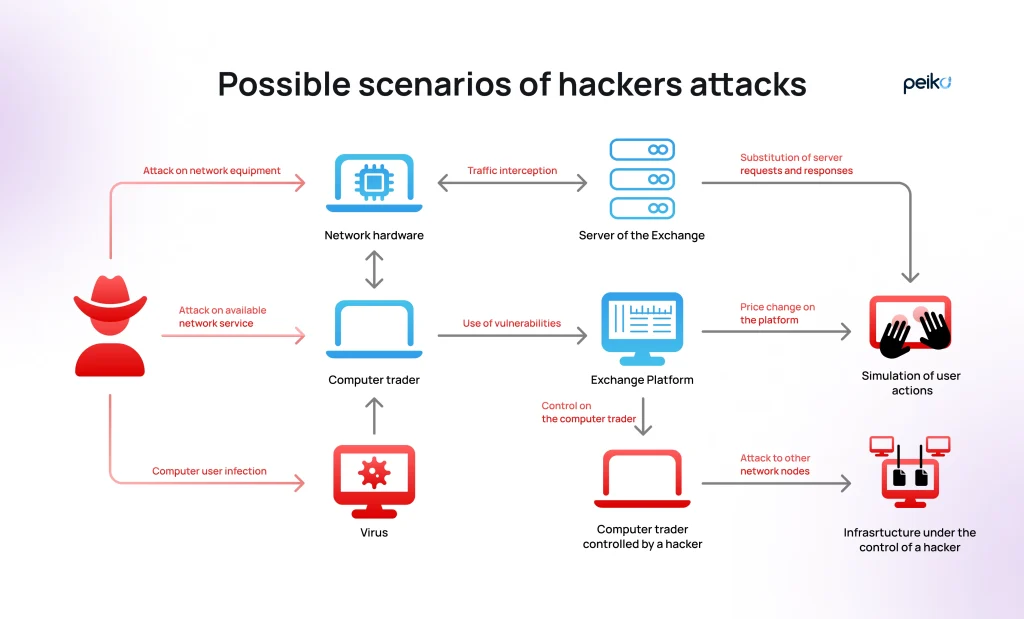
For crypto exchange owners, maintaining a vigilant stance on security is paramount. Safeguarding funds through various measures is essential for a successful business. Dedicate substantial time and resources to bolster security levels. Implementing two-factor authentication, adopting a combination of cold and hot wallets, encrypting databases, deploying anti-phishing features, and staying updated with the latest technologies are crucial steps to fortify your exchange’s security.
By prioritizing these security measures, you can build trust among users and ensure the integrity of your cryptocurrency exchange platform.
Step 9: Fully test your crypto exchange
The testing phase in our guide on how to create cryptocurrency exchange is of utmost importance and should never be overlooked. Ensuring the smooth and secure functioning of your platform is essential. To achieve this, conduct comprehensive testing procedures, including:
- Vulnerability testing
- KYC verification testing
- Deposit and withdrawal testing
- Cryptocurrency purchase and sale testing
- Registration process testing
- The Open Web Application Security Project (OWASP) Testing
- Testing of APIs and WebSockets and more
By diligently conducting these tests, you can pinpoint vulnerabilities and address any potential issues in the exchange’s logic. Protecting your customers’ personal data and assets is paramount, and seamless cryptocurrency transactions should be your priority.
Additionally, actively gather user feedback to make necessary improvements, ensuring continuous enhancements to your platform’s performance and overall user experience. A robust testing process will lead to a more reliable and user-friendly crypto exchange.
Step 10: Launch your crypto exchange
After successfully completing the testing phase and ensuring everything is running smoothly, it’s time to launch your cryptocurrency exchange and welcome traders into your platform. However, the journey doesn’t end here. To ensure long-term success, you must continuously maintain, update, and promote the exchange.
Stay ahead of the game by following the latest trends and promptly integrating new features to provide your customers with cutting-edge tools. At Peiko, we always keep an eye on the latest trends to deliver modern and feature-rich blockchain and web solutions like Zoobdoo, for example. Additionally, consider legislative changes to ensure your exchange remains compliant with evolving cryptocurrency regulations.
As the digital landscape evolves, it’s crucial to be vigilant against emerging hacking techniques. Strengthen your security measures to withstand cyberattacks and protect your customers’ valuable assets. By staying proactive and adaptable, your cryptocurrency exchange can thrive in the ever-changing market, offering a safe and seamless trading experience to your users.
The expertise of Peiko in crypto exchange development
In the realm of cryptocurrency exchange creation and custom software development services, Peiko stands out as a seasoned development partner. We offer a distinct set of strengths that make us a preferred choice among clients seeking exceptional solutions:
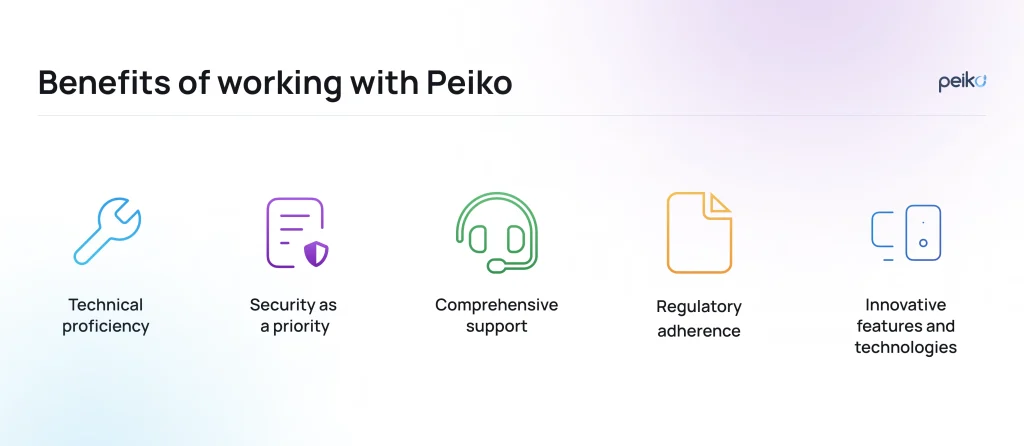
Technical proficiency
Our team of adept developers and engineers empowers Peiko with a strong technical foundation, ensuring the creation of resilient and scalable cryptocurrency exchanges. Profound knowledge in the area of blockchain development services, smart contracts, and security protocols allows us to deliver cutting-edge platforms.
Security as a priority
Security takes precedence in the cryptocurrency landscape, and Peiko integrates robust measures at every development phase. Our team implements stringent security protocols, encryption practices, and industry-best standards to fortify exchanges against potential cyber threats.
Comprehensive support
Peiko is dedicated to offering comprehensive support throughout the full development lifecycle. From initial ideation to deployment and ongoing maintenance, our team ensures a reliable and seamless experience for our clients.
Regulatory adherence
Navigating the regulatory landscape is crucial, and Peiko’s expertise extends to ensuring our solutions comply with relevant regulations. Clients can rely on us for the legal and compliant operation of their platforms.
Innovative features and technologies
Staying at the forefront of technology, Peiko incorporates innovative features and technologies into cryptocurrency exchanges. Whether integrating decentralized finance (DeFi) elements, NFT (non-fungible tokens) functionalities, or other cutting-edge components, we strive to keep our clients ahead in the competitive market.
One of the solutions we are proud of is a Quan2tum crypto exchange platform. This cryptocurrency exchange facilitates the buying and selling of popular coins while maintaining a high level of security, adhering to European standards. Also, this platform offers a bonus system for new customers and a multi-level commission structure. Users can invest in the platform’s native coin, BTCA, and earn passive income.
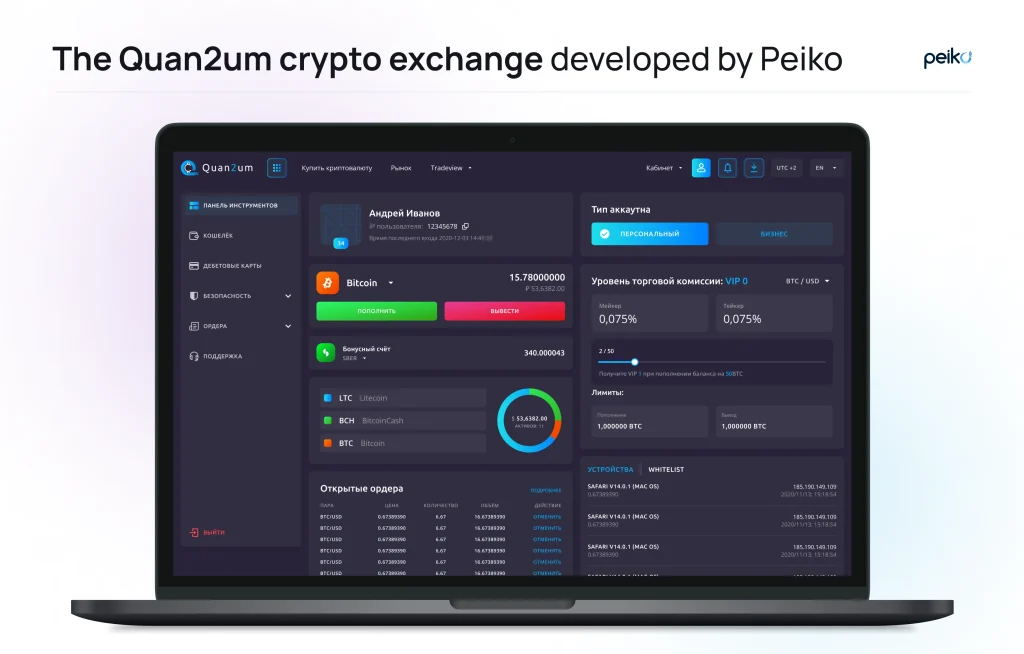
Our task was to develop a trading platform enabling real-time market tracking while ensuring price control within the average market range. The goal included maintaining market liquidity and facilitating swift currency transactions with utmost security for user funds.
We implemented all our clients’ requirements in life. So, they obtained a reliable and seamless working solution that users like.
Summing up
Despite the various adoption challenges, the blockchain impacts on trade finance, healthcare, and many other fields around us. The cryptocurrency exchange industry continues to evolve rapidly. Each day, new entrants join the crypto market, striving to create cutting-edge exchange platforms that meet modern demands.
These aspiring creators aim to incorporate essential features, introduce new trading instruments and cryptocurrency pairs, enhance transaction speed, and above all, prioritize maximum protection for their clients’ funds. To thrive in this highly competitive market, if you’re planning to launch a Bitcoin exchange business, your solution must prioritize a user-friendly interface, state-of-the-art exchange software, and responsive customer support (depending on your exchange type).
However, paramount of all, ensuring robust cybersecurity measures is critical, as weak protection can undermine even the most advanced features.
Are you seeking to establish a cryptocurrency exchange that operates seamlessly and successfully? Our team of experts is ready to address all your inquiries while finding the optimal solution.
For further information, please visit our website or reach out to our dedicated support team. Your success in the dynamic world of cryptocurrency is our priority.










